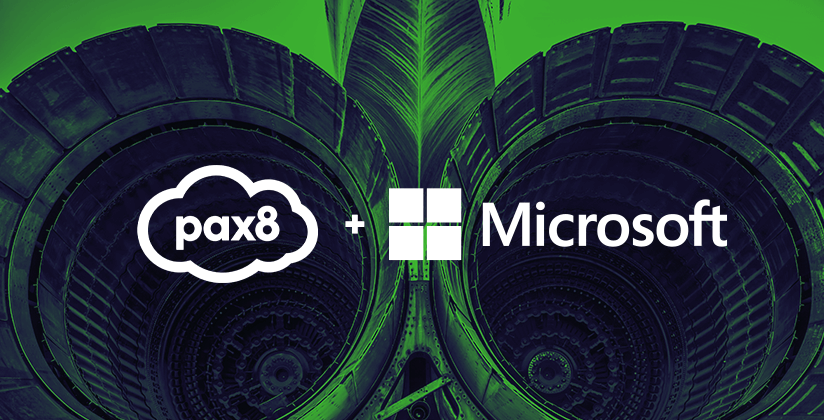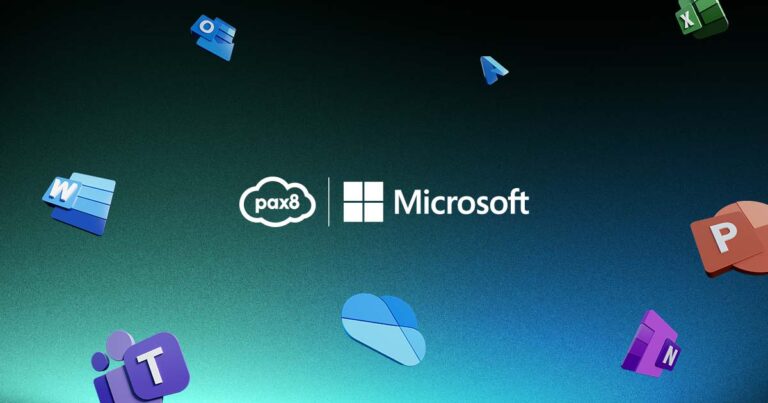Learn what M365 brings to the table to make it a compelling addition to MSP’s stack.
Up until a few years ago, Office 365 was the most recognizable productivity app in business, with 100 million monthly active users by April 2017. Then in July of that year, Microsoft debuted O365’s little – but very cool – new sibling. Microsoft 365 (M365) had entered the chat, along with a superset of essential features for the modern workplace.
A Solution That Covers All the Bases
Since then, M365’s product tiers have undergone a few name changes and some feature shuffling, but what’s remained the same is the value that selling M365 brings to an IT professional’s tech arsenal.
For most managed service providers (MSPs) serving small and medium-size businesses (SMBs) with 25 to 300 seats, Microsoft 365 Business Premium is a compelling, comprehensive offering to add to their stack to empower clients to communicate and collaborate while keeping their data protected.
You see, the magic of Microsoft 365 Business Premium is how it integrates the Office productivity apps that users know and love with granular device management and best-in-class security features. Combine this highly sellable feature set with the available rebates and incentives from the Microsoft CSP Program, and you’ve got a powerful offering on your hands that can bring in high margins for your cloud business.
Productivity for the Modern Workplace
We all know the story. In recent years, workplaces around the globe had been experimenting with and slowly transitioning to remote and flex work. Then, 2020 hit and work from home skyrocketed. The ability for distributed teams to effectively communicate has now become an absolute requirement for most businesses’ technology needs.
“Collaboration” no longer means huddling around a desk in the office, but instead requires tools such as video calling, instant messaging, and real-time shared document editing. And the product of choice for many organizations to accomplish all this? Microsoft Teams.
Teams is the hub for teamwork in M365, with a chat-based workspace that includes group chat, video, file sharing, screen sharing, calendar integration, and more. Microsoft Teams hit 115 million daily active users in October 2020, a 50% increase from 75 million in April – and a whopping 475% increase from 20 million daily active users in November 2019.
Teams has even found the spotlight in the pandemic at NBA games, with the Teams “Together Mode” feature used to virtually seat basketball fans in the audience during live games.
Because Teams is included with M365 Business Premium, the in-demand collaboration capabilities of Teams are a natural starting point for conversations with clients about moving to M365.
Advanced Security & Data Protection
Security: It’s the leading topic of IT discussions for companies big and small as hacking, phishing, ransomware, and social engineering attacks continue to grow in volume and sophistication. And it’s why the fact that M365 Business Premium includes a slew of advanced security and data loss prevention features is so compelling to SMBs.
Get ready for some rapid-fire acronyms! As part of M365 Business Premium, Advanced Threat Protection (ATP) defends email from malicious links and phishing, while Windows Defender protects devices from ransomware and malicious websites.
To defend data, Azure Information Protection (AIP) classifies documents and email, Data Loss Prevention (DLP) detects and protects sensitive information, and Exchange Online Archiving helps preserve and recover data to maintain compliance.
As a final layer, Azure identity management features such as multi-factor authentication (MFA) and conditional access (CA) safeguard access to apps and data, while Bitlocker encryption protects data on devices.
It’s been proven over and over that a layered approach to security is the best way to prevent the widest range of attacks. While M365 doesn’t cover every security avenue, it provides a solid foundation for SMBs to protect their documents, data, and devices.
Device & Application Management
Productivity and security together make M365 an enticing option for SMBs. But this cake has a third layer – and one that’s especially tasty to MSPs. The proliferation of employee devices, from phones to tablets to laptops, has become a major headache and time sink for MSPs to try to deploy, secure, and manage them all for their clients.
As employees move outside the safety of the company firewall during this era of remote work, device endpoints have become a major liability for data loss. This is especially true as the line between “company device” and “personal device” gets blurred. Companies want to be able to balance employee autonomy and productivity, with security, compliance, and control.
This is where M365’s device and application management features such as Intune and Autopilot shine. Intune supports a diverse mobile environment by managing devices and apps from the cloud to protect company info while maintaining productivity.
Intune allows you to remotely configure security policies on devices, report on compliance and app usage, remotely wipe data, and publish, configure, and update apps. Autopilot simplifies device provisioning with a “zero-touch” experience to configure and enroll new devices as well as reset and retire old ones.
Device management is perhaps the least immediately obvious M365 benefit to end clients, so take your time to explain how these capabilities allow them to enforce policies, maintain compliance, and protect data on devices, while still empowering employees to get work done.
Putting It All Together
By integrating modern productivity tools, advanced security and data protection features, and device management capabilities, M365 is a powerful foundational solution for SMBs.
And, as your Cloud Wingman, Pax8 is here to enable you to adopt and sell M365. Register for an upcoming M365 Bootcamp for two days of intensive business and technical training, or check out The MSP’s Guide to Selling M365 below to learn how to effectively position M365 to your clients, including a white-labeled email template you can use to start the conversation.





